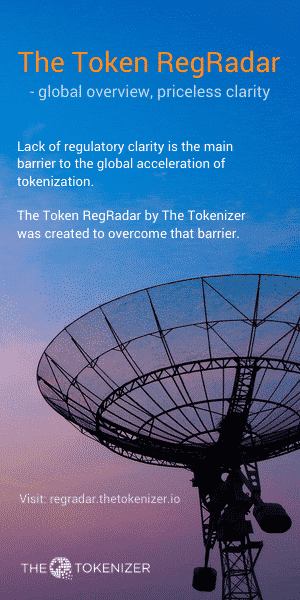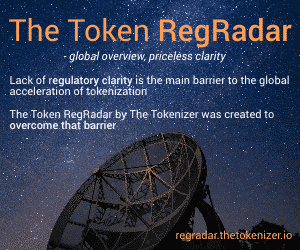As discussed in some of my previous articles, it is clear that the security token framework presents numerous immediate and long term opportunities. The task of unlocking this value is by no means trivial — many exceptionally talented companies and individuals are working on it alongside some of the top law firms in the world. It is these type of companies that need to be recognised and supported, since their progress will benefit the society as a whole.
By Karlis Markots
As was demonstrated by the ICO bubble, signalling project quality is by no means simple. At first, companies attempted to select a credible team — relatively simple to replicate by bad actors. Afterwards, the most prominent advisors — that too proved to be simple to fake. Being featured on top media outlets? Fraudulent companies figured out ways of doing that too. A large community? Simple — buy telegram users and mimic traction. One of the final uncompromised ways of signalling project quality — actually having a quality project. By the time most quality companies got to this stage, the market was gone for the good and the bad actors alike.

Driven by greed and opportunity, many of the same cast of characters have now entered the “security token space”. The intention of these actors is to mix needless complexity with bold statements thus confusing the investor and leveraging their fear of missing out. Their goal typically is to sell you something under the name “security token”. Thankfully, the level of knowledge among investors and participants is increasing, steadily eliminating the room for uninformed decisions.
The goal of this article is to present a toolkit to accelerate this dynamic. Below is a set of 5 questions to ask any company claiming to be a Security Token issuer. As a sidenote, there is yet to be a consensus on the vocabulary, so some of the alternative labels for the same concept include — Tokenized Securities, Blockchain Securities, Smart Securities and a few others. Don’t let the terms confuse you — all of them essentially refer to representing real or financial asset ownership on a distributed ledger.
- Why a Security Token? Why not debt or equity instead?
- How exactly is the value added?
- Will the Security Token be liquid?
- What kind of infrastructure will be used?
- What legal framework will be used? What are its’ main limitations?
As per each of the questions, we’ll take a look at the typical red flag answers and break them down. They do not necessarily indicate that the underlying project is fraudulent or baseless, but definitely should serve as a reason to take a closer look. These are all taken from my personal experience and indeed I’ve heard similar things on a number of occasions.
Why a Security Token? Why not debt or equity instead?
Red flag answer example: Because security tokens are the next big thing. They will massively grow in value. Everything will eventually be tokenized. Security tokens are liquid and have a global investor base with 24/7 trading, whereas equity and debt does not. Also, we have partnerships with many exchanges and affiliate marketing agencies, so it will be easier to raise money.
Why this is a red flag: a portion of the crypto market cap is based on belief. People usually do not like when their beliefs are questioned. Asking to name the specific advantages of the Security Token framework over traditional debt or equity is doing just that. One should be very careful if upon asking this question, the answer is very broad, general and non-specific. The knowledgeable person will start by breaking down the limitations of traditional financial instruments, and how the ownership is stored. From there, they are likely to explain how the use of the Security Token framework addresses these issues.
If a person is to truly recognize the value of security tokens, they should at least understand what problems are being solved. Liquidity and a global investor base are problems that people want the security tokens to solve, but it’s far more complex. This type of answer is typical among those who vastly underestimate the complexity of the challenges involved. For example, as of Feb. 22. 2019, there are no exchanges that have solved the secondary trading of private securities, even though several claim to have done so.
Previously I have argued that the main domain for competition in the ICO fundraising market, was marketing. If anyone notes that security tokens are superior to traditional debt or equity, mainly because they will be more “popular”, this shows that the person considers the security token framework as just another shiny object to sell, regardless of the actual merit. These people should be avoided at all cost.
How exactly is the value added?
Red flag answer example: 2019 is the year when institutions are coming to the market, and the prices will go up a lot. So they will invest also in security tokens, and better to have some when they do. Also, you can easily sell or buy them, so if you don’t like it, just sell your security tokens on an exchange.
Why this is a red flag: usually the first question is enough to give a decent indication about the merit of the issuer. However, the industry has produced top class demagogues, and they should be examined in more detail to reveal the limitations of their understanding. When pressed with a specific question, they will try and restore the conversation to more general terms.
The typical red flag answer will again vastly oversimplify things and revert back to preachings echoed in the wider crypto community. The answer will not differentiate between cryptocurrencies as a means of storing value and the security token framework as a means for simplifying securities transactions. Their explanations will imply that “the price of security tokens will rise”, without even having a decent explanation of what security tokens are.
One of the easiest things to spot is the assumption that security tokens will be accessible to the non-accredited investor through existing crypto exchanges. Not only is this a very loaded assumption, but it also implies certainty of future regulation. If the claim of exchange tradability is made without outlining the challenges and complexities, this often indicates that the person might not know what they are talking about.
Will the Security Token be liquid?
Red flag answer example: Sure, since the blockchain technology allows for 24/7 trading. Also, since anyone can access crypto exchanges, you will have the whole world as potential buyers and sellers. And since the tokens will be regulated, users will feel confident in buying and selling more.
Why this is a red flag: achieving asset liquidity via the security token framework is a long term ambition, about which you can read here. The consensus currently is that security tokens should be considered in the same regulatory boat as private securities, since for the foreseeable future, they would be the same thing, just within different infrastructures. Stating that these type of instruments can be freely traded on exchanges for non-accredited investors, demonstrates a very limited understanding.
Just because a security is placed on a distributed ledger for ownership management purposes, doesn’t mean that it will be regulated any differently. 24/7 trading is one of the dogmas preached most often, people think it’s a big deal. What they will neglect to tell you, is that the tech for 24/7 was already here before blockchain. Just look at FX markets, for example.
Having the “whole world” as potential buyers and sellers is a naïve way of swiping regulatory frictions under the rug. This was only possible in the unregulated days of “utility” tokens, and there is absolutely no rational reason for thinking that this will apply to securities, structured within the security token framework.
What kind of infrastructure will be used?
Red flag answer example: What do you mean by “infrastructure”? The tokens will be listed on an exchange, we currently are talking to many exchanges that are interested. Also, you can use any wallet provider that you like.
Why this is a red flag: people who claim that a tokenization adds value in its’ own right, clearly don’t have a clue. It is the access to the existing wallet, trading and other infrastructure that stands to unlock any future upside. The typical nonsense answer will neglect this, and make you want to believe in blockchain magic.
If a security token issuer claims to be talking to exchanges about listing their token, one of two things is very likely to be true. Either it’s just talking, or they simply don’t know what they don’t know. Any instrument regulated under securities laws, can’t simply be traded on an unregulated an unlicensed trading platform. To assume otherwise is to ignore the facts.
The entire reason for structuring assets within the security token framework is to gain simple, frictionless access to the emerging ecosystem. It’s basically like buying an early discount ticket to an amusement park where most of the rides are still under construction. In the vast majority of security token preaching cases, this is totally neglected. Instead, most senseless security tokens play on the angle of the merit of tokenization in its’ own right. This is complemented by denouncing sceptics as non-believers with a limited view.
What legal framework will be used? What are its’ main limitations?
Red flag answer example: Oh right now we haven’t decided yet where to regulate our security token offering. Most likely it will be Switzerland, Estonia or Belarus. They have very good rules for crypto.
Why this is a red flag: in the current landscape on creating financial instruments within the security token framework, this is among the most pressing of challenges. Coming up with a thesis on how to enable the security token framework, should stem from an understanding of how it can be done legally. In the absence of a global best practice solution, security token issuers with merit will be quick to address this without invitation, since this is one of the more complex problems in the space.
If anyone claims that their security token offering does not require thorough legal analysis and perhaps even an open dialogue with the regulators, they are likely in for a rude awakening. And if indeed there are no legal complexities in structuring and issuing a security token, then the “security token” is likely just a façade, and little upside is to be expected from tokenization.
On top of this, the regulatory framework most likely dictating the development of security tokens, is going to be the same one regulating the issuance and offering of private securities, as opposed to crypto tokens. Having a more or less clear regulation for crypto tokens is nice, but once the asset is deemed a security, the entire game changes. In the absence of fraudulent activity, there generally is no such thing as unregulated securities, whether represented on paper, or a distributed ledger.
Concluding thoughts
Creating confusing hype is not difficult. Creating clarity is. For those of us who are committed to redesigning how ownership works, the fact-based, pragmatic approach must now ensue. We have already seen that a multi-billion industry can form upon cheap hype with very little fundamental value (read: Initial Coin Offerings). This worked once — in the short run, and is not sustainable in the long run.
Undeniably, there is plenty of blind belief left in things surrounding blockchain. The responsible initiative is to channel this belief towards creating long term value, as opposed to monetizing short term without value creation.
It is time not only to look at things pragmatically but to encourage others to do so. Eliminating bad actors trying to profit from the belief of less knowledgeable should be a systemic effort by those committed to real change. The most effective way of doing that is by questioning whatever bold claims are put in front of you. If anyone claims to be doing something revolutionary, make them break it down to the very fundamental layers of what you know to be true. Not only will this show the merit (or absence of it) of the issuer, but also help them examine their security token for ways to improve.
Be cautious of bold statements by “top-down” people — they can be seductive, even if they are nonsense. If anyone approaches the security token infrastructure “bottom-up”, hear them out and ask questions. Someone who really knows what they are doing will be able to explain it to a 12-year-old, so don’t assume to not have the knowledge to understand it.
Text by Karlis Markots. Read more articles by Karlis here. For comments, criticism, suggestions or misc enquiries please reach Karlis at [email protected]
Don’t miss out on other articles:
Tokenization of classic cars: revival of a hidden gem for financial asset diversification?
You Might also Like















